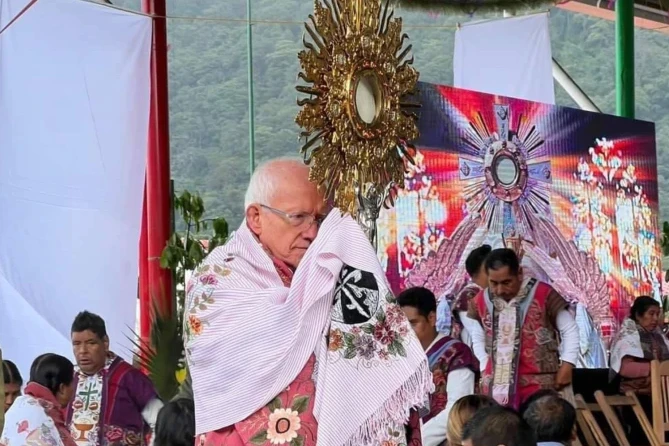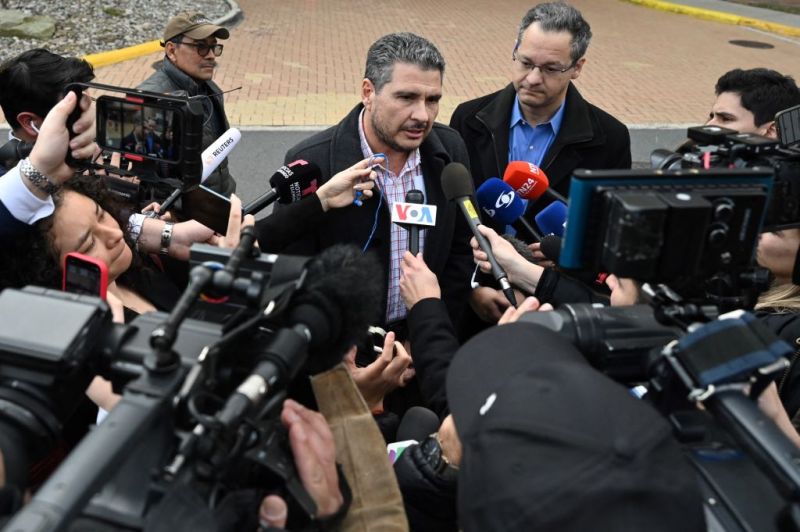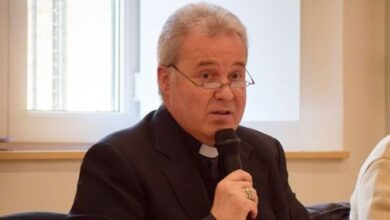Mexican bishops clarify: there is no ‘Mayan rite’

 Holy Hour celebration in southern Mexico's San Cristobal de las Casas diocese. / Credit: Courtesy of Diocese of San Cristobal de las Casas
Holy Hour celebration in southern Mexico's San Cristobal de las Casas diocese. / Credit: Courtesy of Diocese of San Cristobal de las Casas Puebla, Mexico, Nov 29, 2024 / 07:00 am (CNA).
Mexico’s bishops have issued a statement clarifying that there is no such thing as an approved “Mayan rite” of the Mass and that the Vatican has only authorized specific liturgical adaptations for indigenous communities in Chiapas state in southern Mexico.
In a statement issued Nov. 24, the Mexican Bishops’ Conference (CEM, by its Spanish acronym) provided several details about the recent adaptations to the Ordinary of the Mass approved by the Dicastery for Divine Worship and the Discipline of the Sacraments.
On Nov. 8, the Vatican granted the recognitio, endorsing the “adaptations to the Ordinary of the Mass in Spanish” for the Tseltal, Tsotsil, Ch’ol, Tojolabal, and Zoque ethnic groups of the Diocese of San Cristóbal de las Casas, located in the Mexican state of Chiapas.
According to the CEM statement, “no ‘Mayan rite’, “Mayan altar”, “prayers to cardinal points” or “transfer of the liturgical presidency to lay persons” have been approved.
The bishops further clarified that “ritual dances during the celebration” were not approved by the dicastery but rather “rhythmic swaying of the body” performed by indigenous communities as a legitimate cultural expression.
The CEM stressed that these adaptations “do not constitute a new rite or a substantial modification of the structure of the Mass of the Roman Missal” and are applicable exclusively to the indigenous peoples indicated and not to other communities of the faithful.
What did the Vatican approve?
Among the authorizations granted by the Vatican is the ministry of the “principal,” a person recognized in his or her community who acts as a monitor at specific moments of prayer.
According to the CEM, the principal “invites the assembly to pray aloud at certain moments of the celebration,” always at the invitation of the priest presiding at the Mass and without assuming “at any time the liturgical presidency.”
Another approved modification is the “prayer of the assembly moderated by the principal,” which is performed at three points: “at the beginning of the Mass, after the greeting,” “during the prayer of the faithful,” and “in thanksgiving after Communion.”
In the latter, the prayer can be performed with body movements accompanied by music, which, according to the statement, “is not a ritual dance, but rhythmic swaying of the body.”
The “ministry of incense” was also authorized, which allows lay people designated by the diocesan bishop to incorporate “the traditional use of incense proper to the communities.”
Context of the adaptations
According to the statement, these adaptations are the result of “a careful process of diocesan discernment,” which was studied and approved by the Mexican Episcopal Conference (CEM), guaranteeing “respect for both the nature of the liturgy and legitimate cultural expressions.”
The implementation of these adaptations, the bishops stated, will be optional and “will be carried out gradually” and with “pastoral monitoring of its application.” To this end, “the necessary training will be provided to priests and pastoral workers.”
The bishops concluded their statement by reiterating their “commitment to the authentic inculturation of the liturgy, always in communion with the universal Church and under the guidance of the Magisterium.”
Cardinal Felipe Arizmendi Esquivel, who led the Mexican bishops’ efforts to promote these adaptations, said in a message shared with ACI Prensa, CNA’s Spanish-language news partner, that “this is very significant,” since it is the second time in history after the Second Vatican Council in which liturgical adaptations were approved; the other was for the Diocese of Zaire in Africa.
This story was first published by ACI Prensa, CNA’s Spanish-language news partner. It has been translated and adapted by CNA.





